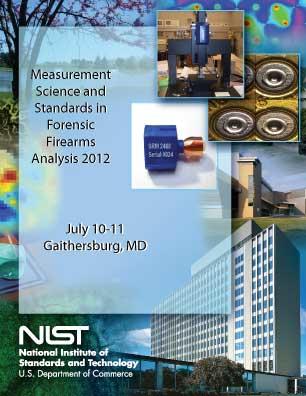
Sponsors
Day One
9:00-9:30 AM | Welcoming Remarks and Framing the Issue
|
9:30-10:00 AM | Keynote Address – 40 Years of Firearms Analysis & a Glimpse of the Future
|
10:00-11:00 AM | Current State of Firearms Analysis: Review of the Field including Strengths & Limitations
|
11:15 AM-12:00 PM | Manufacturing Processes and Materials
|
12:00-12:30 PM | Introduction to Measurement Science Advances in Firearms Analysis
|
1:30-3:15 PM | Measurement Science Advances in Firearms Analysis
|
3:30-5:00 PM | Advances in Image and Statistical Analysis in Firearms Analysis
|
Day Two
9:00-10:00 AM | Advances in Image and Statistical Analysis in Firearms Analysis – cont.
|
10:00-11:00 AM | Measurement Uncertainty & Certainty of Conclusion
|
11:15-11:30 AM | ATF's International Correlation Server
|
11:30 AM-12:30 PM | Industry Panel on Future of the Discipline: Automated Ballistic Search & Identification Systems
|
1:30-2:30 PM | Role of Standards and Validation to Extend Quantitative Measurement into Practice
|
2:45-4:45 PM | FACILITATED DISCUSSION: What does the future state of firearms analysis look like? What are the barriers to implementing the future state? Design a roadmap to get there.
|
4:45-5:00 PM | Meeting Summary & Next Steps
|
Final Abstracts [PDF]
Webcast: The workshop was webcast live and a live Twitter Chat was conducted using the hashtag #NISTForensics.
Background:
The forensic science discipline of firearms and toolmarks analysis traces its roots back to the early 1900s. Over the last century, there have been many scientific studies published on the identification of striated and impressed marks made by both consecutively and non-consecutively manufactured tools and components. The discipline primarily relies upon a trained and experienced firearms examiner using a comparison microscope to assess the similarities of a known and unknown item in order to generate a conclusion. After completing their analyses, firearms examiners typically draw one of four possible conclusions - identification, inconclusive, unsuitable, and elimination. The examiner is able to generate an opinion of identification when the unique surface contours of two toolmarks are in "sufficient agreement." The Scientific Working Group for Firearms and Toolmarks (SWGGUN) has stated, "Currently the interpretation of individualization/identification is subjective in nature, founded on scientific principles and based on the examiner's training and experience."
Various researchers have attempted to apply more objective and quantitative measurement based techniques to the analysis of firearms and toolmarks. This research has advanced the discipline; however, these techniques have not been universally adopted into routine practice by examiners.
Goal:
The goal of this conference was to discuss and document the current analysis techniques used by firearms examiners and how the practice could be enhanced through the use of advancements in measurement science and research investments in quantitative analysis capabilities.
Objectives:
- Discuss the current state of firearms analysis techniques and limitations
- Discuss research advancements supporting quantitative measurements in firearms analysis
- Develop a roadmap to incorporate quantitative measurements in analysis procedures
- Document the potential barriers to achieving the future state of quantitative analysis
Attendees:
Conference presenters and attendees were firearms examiners, researchers, measurement science experts, statisticians, material scientists, metallurgy experts, image analysis experts, and industry representatives.
Anticipated Topics Include:
- Overview of the current firearms analysis techniques for both cartridge cases and projectiles
- Theoretical basis for quantitative analysis techniques in firearms analysis
- Transitioning quantitative measurements into practice
- Research areas to be explored
- What could the future state of firearms analysis look like?
Planning Team:
This conference was designed by a small planning team which includes representatives from NIST (www.nist.gov), AFTE (www.afte.org), and SWGGUN (www.swggun.org).
Holiday Day Inn
Two Montgomery Village Ave, Gaithersburg MD 20879
Room Block Rate $125
Tel: 1-800-315-2621
Please refer to NIST Forensics Firearms Conference
If you are not registered, you will not be allowed on site.
Registered attendees will receive security and campus instructions prior to the workshop.
NON U.S. CITIZENS PLEASE NOTE:
All foreign national visitors who do not have permanent resident status and who wish to register for the above meeting must supply additional information. Failure to provide this information prior to arrival will result, at a minimum, in significant delays (up to 24 hours) in entering the facility. Authority to gather this information is derived from United States Department of Commerce Department Administrative Order (DAO) number 207-12. When registration is open, the required NIST-1260 form will be available as well.

